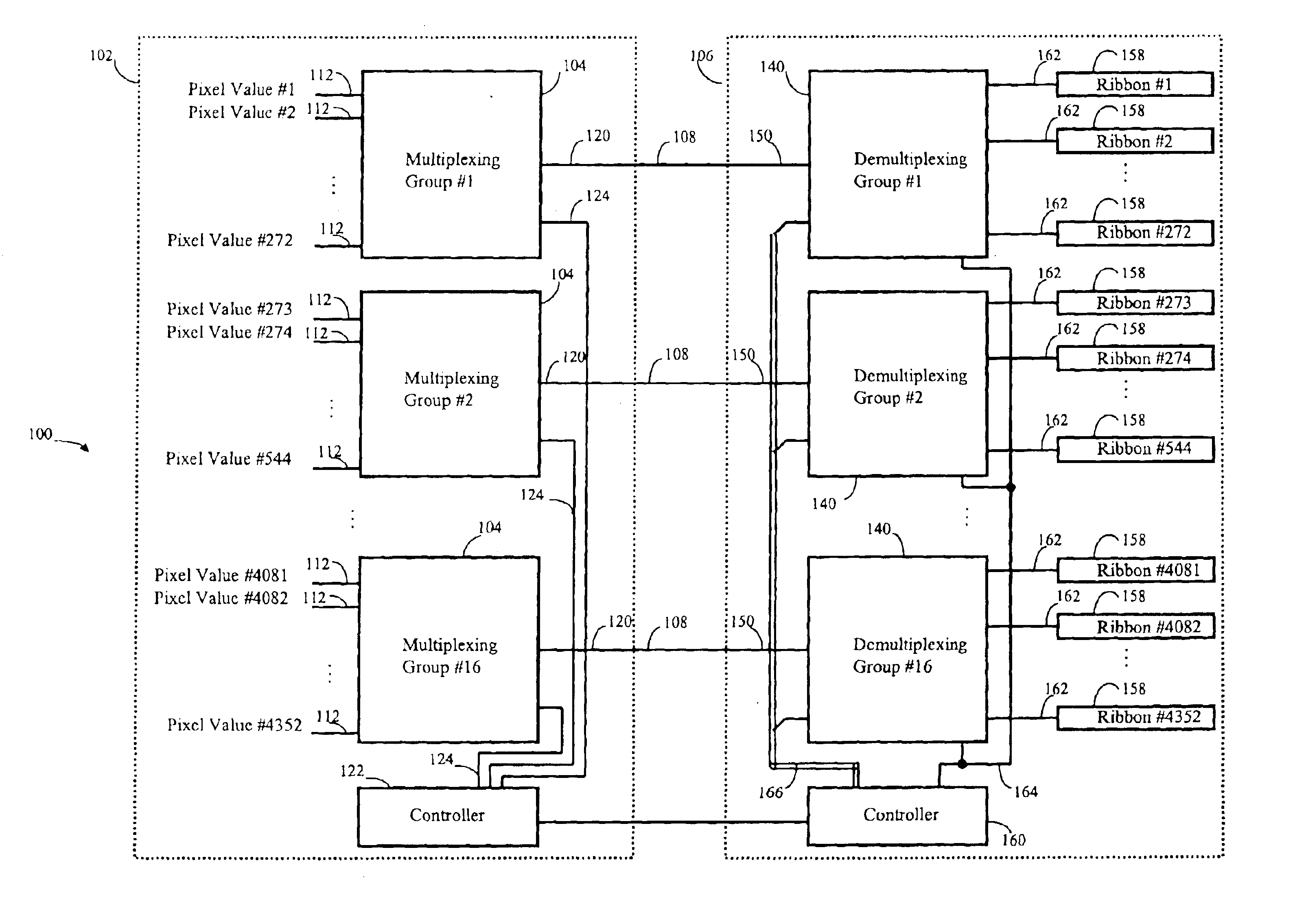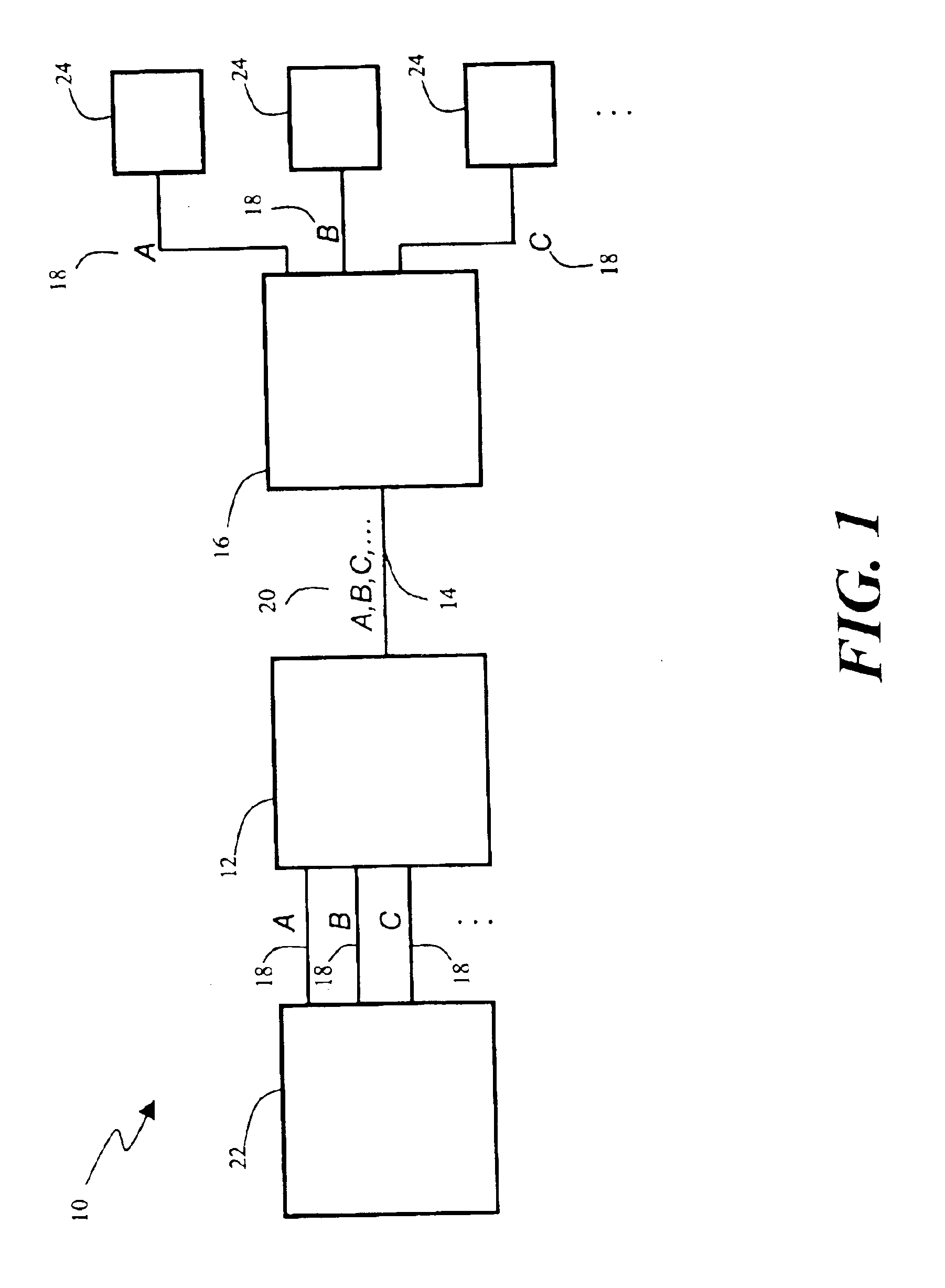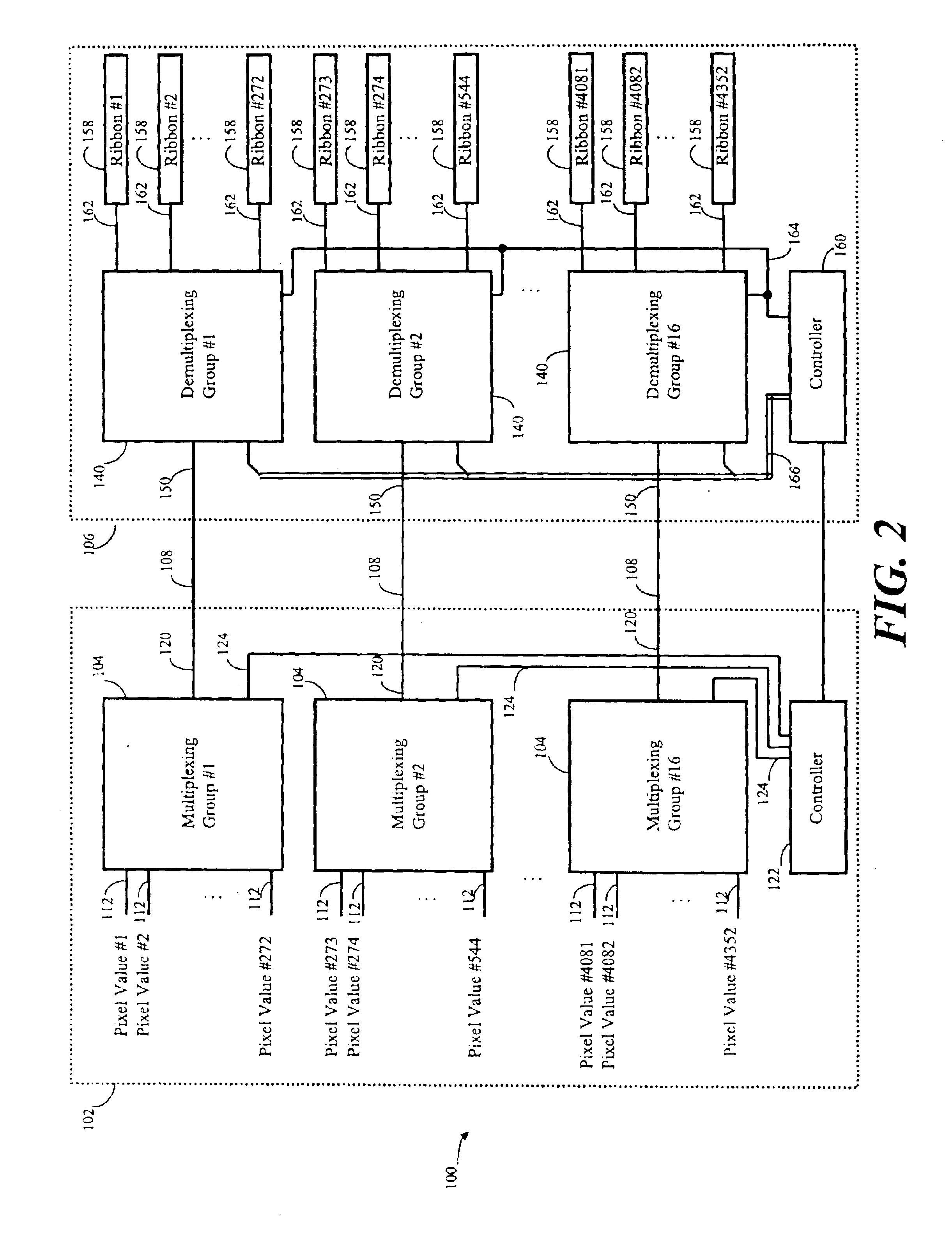Ultra-high resolution light modulation control system and method
a control system and ultra-high resolution technology, applied in optics, static indicating devices, instruments, etc., can solve the problems of limiting the ability to provide gray scale control of intensity, impractical high-resolution display approach, and many bond wires that are required, so as to improve the flexibility of pixel to microscopic optical structure mapping, the effect of reducing the lead coun
- Summary
- Abstract
- Description
- Claims
- Application Information
AI Technical Summary
Benefits of technology
Problems solved by technology
Method used
Image
Examples
Embodiment Construction
Reference will now be made to the exemplary embodiments illustrated in the drawings, and specific language will be used herein to describe the same. It will nevertheless be understood that no limitation of the scope of the invention is thereby intended. Alterations and further modifications of the inventive features illustrated herein, and additional applications of the principles of the inventions as illustrated herein, which would occur to one skilled in the relevant art and having possession of this disclosure, are to be considered within the scope of the invention.
It is to be understood the term “multiplexing” used herein refers to any technique for combining two distinct electrical signals for communication through an electrical interface. It is also to be understood the term “demultiplexing” used herein refers to any corresponding technique for extracting the distinct electrical signals from a multiplexed signal. It is also to be understood the term “interconnect” refers to an...
PUM
| Property | Measurement | Unit |
|---|---|---|
| optical structures | aaaaa | aaaaa |
| microscopic optical structures | aaaaa | aaaaa |
| structures | aaaaa | aaaaa |
Abstract
Description
Claims
Application Information
 Login to View More
Login to View More - R&D
- Intellectual Property
- Life Sciences
- Materials
- Tech Scout
- Unparalleled Data Quality
- Higher Quality Content
- 60% Fewer Hallucinations
Browse by: Latest US Patents, China's latest patents, Technical Efficacy Thesaurus, Application Domain, Technology Topic, Popular Technical Reports.
© 2025 PatSnap. All rights reserved.Legal|Privacy policy|Modern Slavery Act Transparency Statement|Sitemap|About US| Contact US: help@patsnap.com



